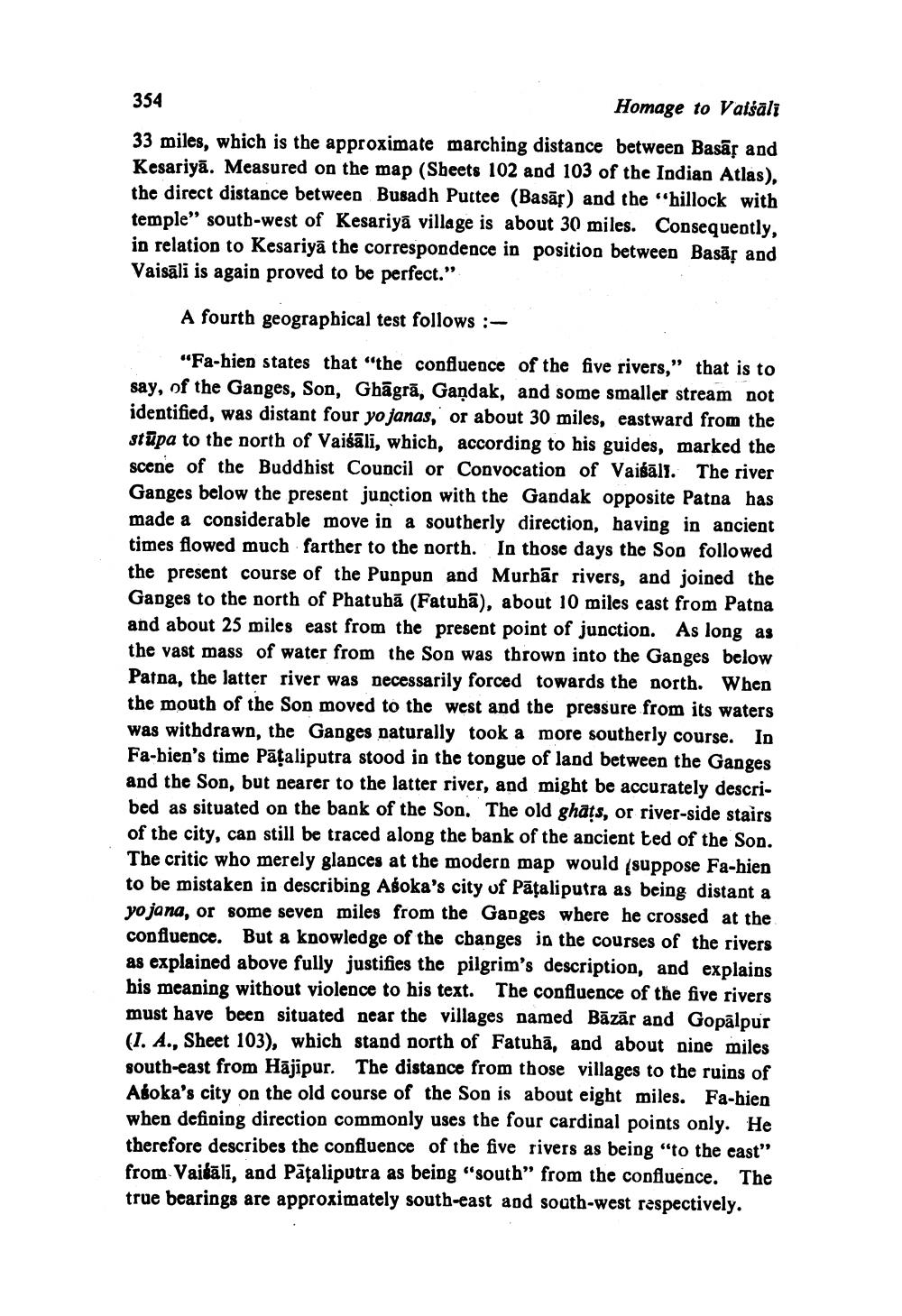________________ 354 Homage to Vaisali 33 miles, which is the approximate marching distance between Basa; and Kesariya. Measured on the map (Sheets 102 and 103 of the Indian Atlas), the direct distance between Busadh Puttee (Basas) and the hillock with temple" south-west of Kesariya village is about 30 miles. Consequently, in relation to Kesariya the correspondence in position between Basas and Vaisali is again proved to be perfect." A fourth geographical test follows: "Fa-bien states that the confluence of the five rivers," that is to say, of the Ganges, Son, Ghagra, Gandak, and some smaller stream not identified, was distant four yo janas,' or about 30 miles, eastward from the stupa to the north of Vaisali, which, according to his guides, marked the scene of the Buddhist Council or Convocation of Vaisali. The river Ganges below the present junction with the Gandak opposite Patna has made a considerable move in a southerly direction, having in ancient times flowed much farther to the north. In those days the Son followed the present course of the Punpun and Murbar rivers, and joined the Ganges to the north of Phatuba (Fatuba), about 10 miles cast from Patna and about 25 miles east from the present point of junction. As long as the vast mass of water from the Son was thrown into the Ganges below Patna, the latter river was necessarily forced towards the north. When the mouth of the Son moved to the west and the pressure from its waters was withdrawn, the Ganges naturally took a more southerly course. In Fa-bien's time Pataliputra stood in the tongue of land between the Ganges and the Son, but nearer to the latter river, and might be accurately described as situated on the bank of the Son. The old ghats, or river-side stairs of the city, can still be traced along the bank of the ancient ted of the Son. The critic who merely glances at the modern map would (suppose Fa-hien to be mistaken in describing Asoka's city of Pataliputra as being distant a yo jana, or some seven miles from the Ganges where he crossed at the confluence. But a knowledge of the changes in the courses of the rivers as explained above fully justifies the pilgrim's description, and explains his meaning without violence to his text. The confluence of the five rivers must have been situated near the villages named Bazar and Gopalpur (I. A., Sheet 103), which stand north of Fatuba, and about nine miles south-east from Hajipur. The distance from those villages to the ruins of Asoka's city on the old course of the Son is about eight miles. Fa-bien when defining direction commonly uses the four cardinal points only. He therefore describes the confluence of the five rivers as being "to the cast" from Vaibali, and Pataliputra as being "south" from the confluence. The true bearings are approximately south-east and south-west respectively.




